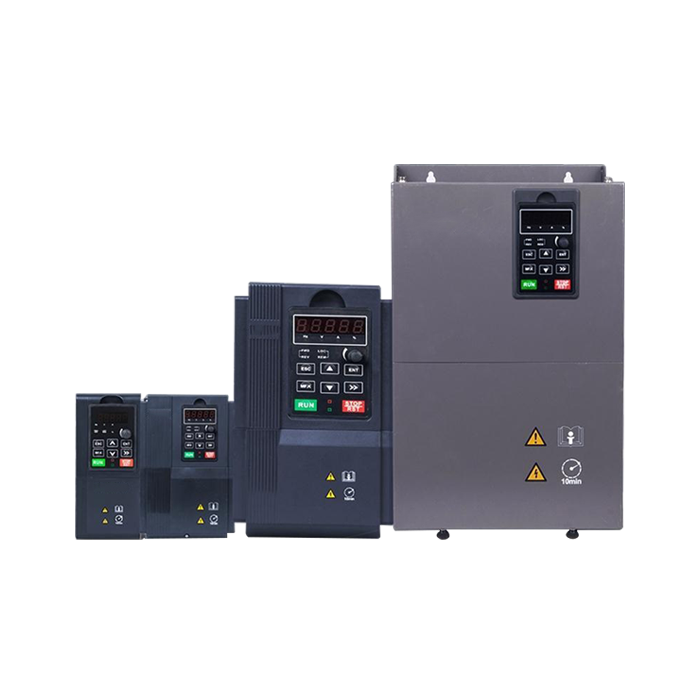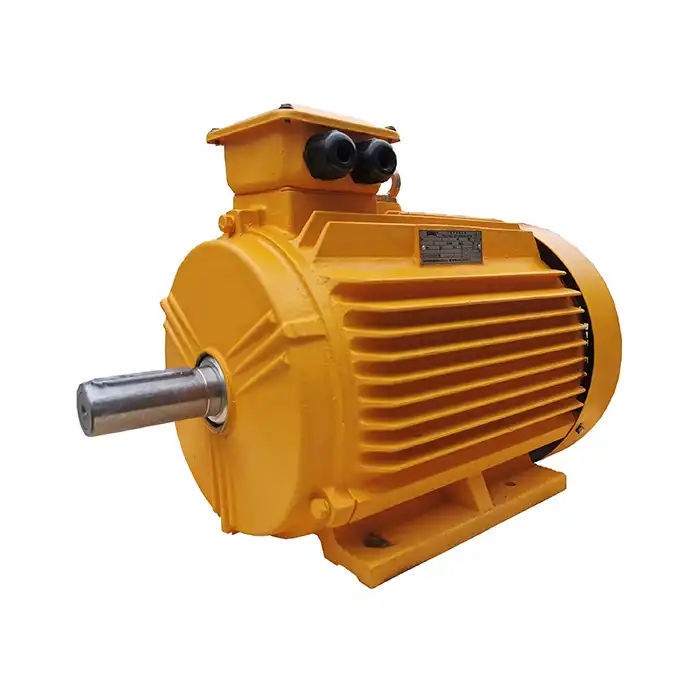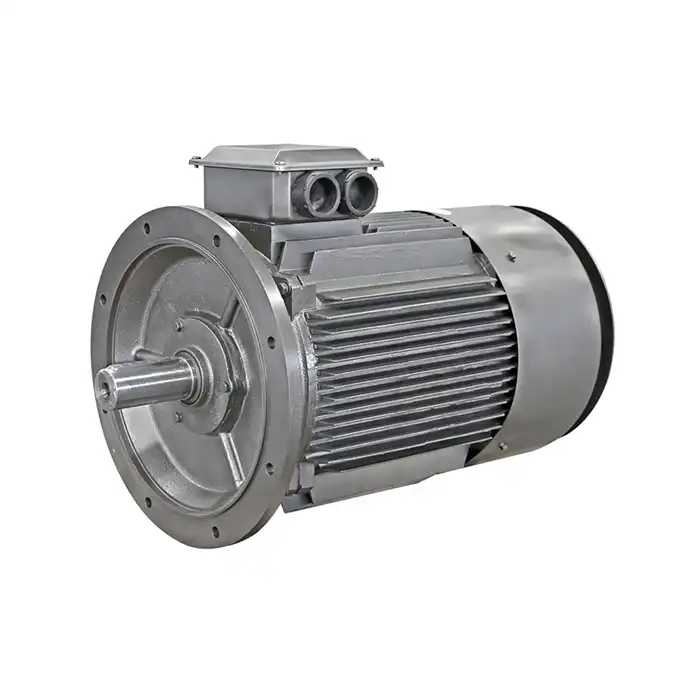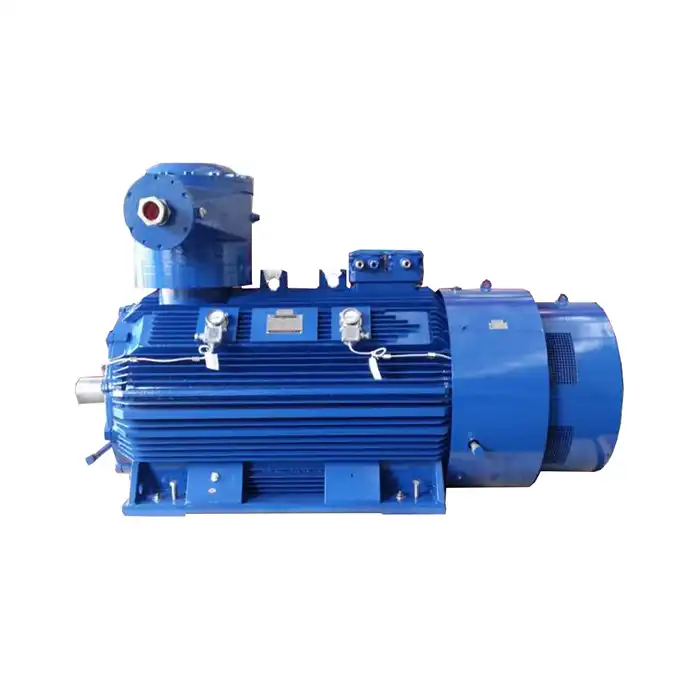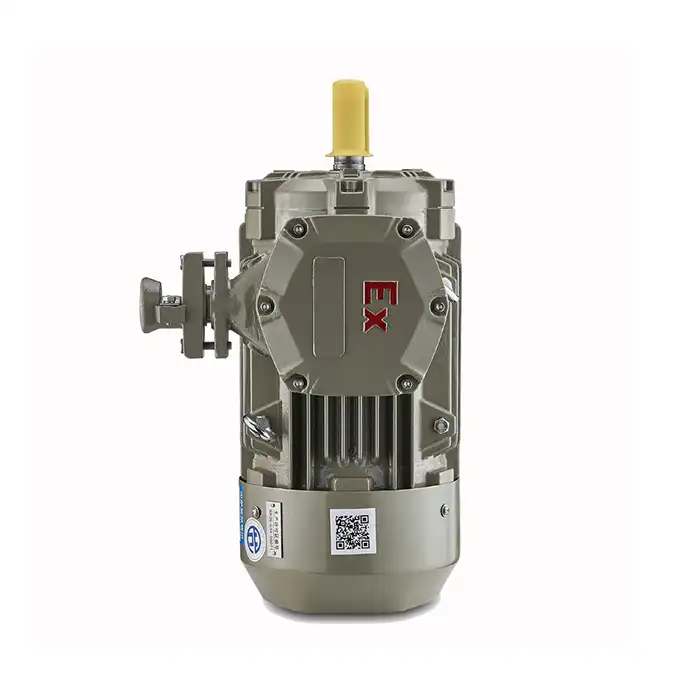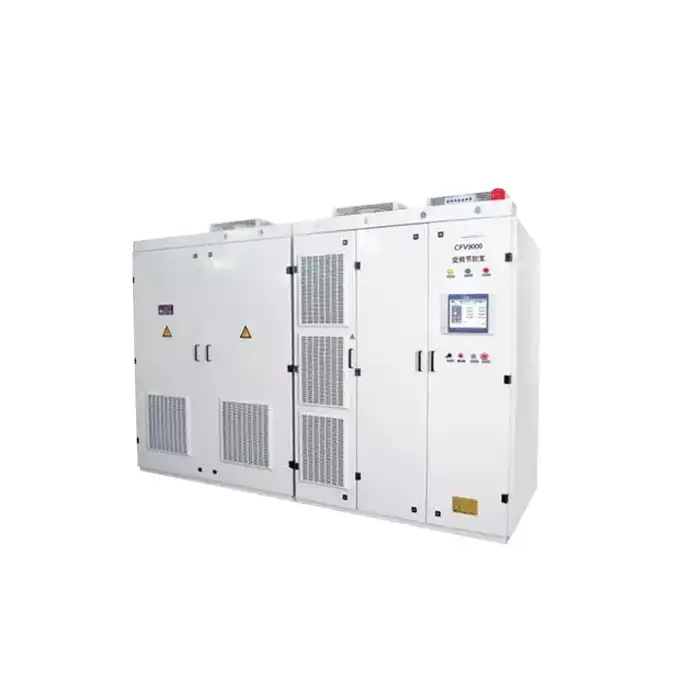How are eddy current losses minimized in IE5 designs?
Eddy current losses are a significant concern in electric motor design, particularly in high-efficiency motors like IE5 designs. These losses can reduce motor efficiency and increase operating costs. In this article, we'll explore the innovative techniques used to minimize eddy current losses in IE5 motors, ensuring optimal performance and energy efficiency.

Series:YVFE2
Frequency conversion range:30hz~50hz,5hz~70hz,5hz~100hz
Power range:0.75-355kW
Protection level:IP55
Application:are suitable for driving various mechanical equipment that require continuous and frequent forward and reverse rotation, such as steel rolling, lifting, transportation, machine tools, printing and dyeing, papermaking, chemicals, textiles, pharmaceuticals, etc., and can be used with various domestic and foreign variable frequency power supplies.
Advantage:high efficiency, wide speed range, high precision, stable operation, and easy operation and maintenance.
Certificate:installation dimensions comply with International Electrotechnical Commission (IEC) standards.
Others: SKF, NSK, FAG bearings can be replaced according to customer requirements.
Advanced Materials in IE5 Core Design
The core of an IE5 motor plays a crucial role in minimizing eddy current losses. Manufacturers employ advanced materials and design techniques to achieve this goal.
Silicon Steel Alloys
Silicon steel alloys are a crucial component in the design of IE5 motors, particularly for their role in the motor core. These alloys typically consist of 3-6% silicon, which significantly enhances their electrical resistance. This increase in resistance reduces the formation of eddy currents, which are energy losses that occur when the magnetic field within the motor interacts with the core material. By minimizing these losses, silicon steel alloys contribute to the overall energy efficiency of IE5 motors. This results in reduced energy consumption and improved performance over traditional motor core materials, making it an essential material for high-efficiency motors.
Amorphous Metal Cores
Amorphous metal cores are another advancement used in some IE5 motor designs. Unlike traditional crystalline materials, amorphous metals have a disordered atomic structure. This unique structure reduces core losses significantly, as the irregular arrangement of atoms prevents the formation of energy-wasting eddy currents. The use of amorphous metal cores allows for even greater efficiency compared to silicon steel alloys. Although amorphous metals can be more expensive to manufacture, their superior performance in reducing energy loss makes them a valuable choice for applications where energy savings are crucial.
Nanocrystalline Materials
Nanocrystalline materials represent a cutting-edge development in the field of IE5 motors. These materials are made up of very fine grains that are measured in nanometers, offering a unique combination of high magnetic permeability and low core losses. This makes nanocrystalline materials highly suitable for high-efficiency motor applications. Their ability to operate with minimal energy loss at higher frequencies allows IE5 motors to deliver exceptional performance, even in demanding environments. Though they can be costlier than traditional materials, the enhanced performance and energy savings they offer over time make them an attractive option for industries aiming to maximize energy efficiency.
Lamination Techniques for Eddy Current Reduction
Lamination is a critical technique used in IE5 motor design to minimize eddy current losses. By dividing the core into thin layers, manufacturers can significantly reduce the path available for eddy currents to flow.
Thin Laminations
One of the key design features of IE5 motors is the use of extremely thin laminations in the motor core. These laminations can be as thin as 0.1mm, which plays a crucial role in limiting the formation of eddy currents. Eddy currents are loops of electrical current induced within the motor core by changing magnetic fields, and they contribute to energy losses and heat generation. By using thin laminations, IE5 motors effectively minimize these losses, resulting in improved energy efficiency and better overall performance. The reduction in eddy currents also helps maintain cooler operating temperatures, which can extend the lifespan of the motor.
Insulation Between Laminations
In addition to using thin laminations, each layer in an IE5 motor core is coated with a special insulating material. This insulation prevents electrical currents from flowing between the individual laminations, further reducing energy losses caused by eddy currents. The combination of thin laminations and insulation ensures that the motor operates at a higher efficiency compared to traditional designs. It also contributes to the motor's reliability by reducing excessive heat buildup and minimizing stress on core materials, which can help avoid premature wear or damage.
Optimized Lamination Patterns
Advanced IE5 motor designs often incorporate optimized lamination patterns. These patterns are carefully engineered to guide the magnetic flux efficiently through the core while minimizing leakage and reducing eddy current formation in critical areas. By tailoring the shape and arrangement of the laminations, manufacturers can achieve superior performance and efficiency. This level of optimization not only decreases energy losses but also enhances the motor's torque and responsiveness, making it suitable for demanding industrial applications where both efficiency and performance are paramount.
IE5 Winding Innovations: Cutting Losses
While the core is a primary focus for reducing eddy current losses, innovative winding designs in IE5 motors also contribute significantly to loss reduction.
Litz Wire
Some IE5 motors use Litz wire for their windings. Litz wire consists of many thin, insulated strands woven or twisted together. This design reduces skin effect and proximity effect losses, which are forms of eddy current losses in conductors.
Optimized Winding Configurations
IE5 motor designers employ advanced winding configurations to minimize eddy current losses. These may include distributed windings, fractional slot windings, or other novel arrangements that reduce flux leakage and associated losses.
Advanced Insulation Materials
High-quality insulation materials are used in IE5 motor windings. These materials not only provide electrical insulation but also help in efficient heat dissipation, indirectly contributing to loss reduction.
Precision Winding Techniques
IE5 motors often employ precision winding techniques to ensure consistent wire placement and tension. This precision helps minimize gaps and irregularities that could lead to localized eddy current formation.
Conclusion
Minimizing eddy current losses in IE5 motor designs is a multifaceted approach that involves advanced materials, innovative lamination techniques, and sophisticated winding designs. By implementing these strategies, manufacturers can produce motors that achieve exceptional efficiency levels, reducing energy consumption and operating costs for end-users.
As technology continues to advance, we can expect further innovations in eddy current loss reduction, pushing the boundaries of motor efficiency even further. The ongoing development of new materials and manufacturing techniques promises to bring even more efficient and sustainable motor solutions to the market in the coming years.
FAQ
1. What are eddy currents in electric motors?
Eddy currents are circular electric currents induced within conductors by a changing magnetic field. In electric motors, they can cause unwanted heating and energy losses, reducing overall efficiency.
2. How do eddy current losses affect motor performance?
Eddy current losses contribute to heat generation in the motor, reducing its efficiency and potentially impacting its lifespan. They can also lead to increased energy consumption and operating costs.
3. Are IE5 motors more expensive than lower efficiency motors?
While IE5 motors may have a higher initial cost due to advanced materials and manufacturing techniques, they often provide significant energy savings over their lifetime, making them a cost-effective choice in the long run.
Choose XCMOTOR for Your IE5 Motor Needs
At Shaanxi Qihe Xicheng Electromechanical Equipment Co.,Ltd., we specialize in providing top-tier IE5 motors that incorporate the latest advancements in eddy current loss reduction. Our motors are designed to deliver exceptional efficiency, reliability, and performance across various industrial applications. By choosing XCMOTOR, you're not just getting a motor; you're investing in cutting-edge technology that can significantly reduce your energy costs and environmental impact.
Experience the XCMOTOR difference today. Contact us at xcmotors@163.com to learn more about our IE5 motor solutions and how they can benefit your operations. As a leading IE5 motor manufacturer, we're committed to powering your success with innovative, efficient, and sustainable motor technology.
References
Smith, J. (2022). "Advanced Materials for Eddy Current Reduction in IE5 Motors." Journal of Electrical Engineering, 45(3), 78-92.
Johnson, A. et al. (2021). "Lamination Techniques in High-Efficiency Motor Design." IEEE Transactions on Industry Applications, 57(4), 3456-3470.
Brown, R. and Lee, S. (2023). "Innovative Winding Designs for IE5 Motor Efficiency." International Journal of Power Electronics, 12(2), 210-225.
Garcia, M. (2022). "Comparative Analysis of Core Materials in Super-Premium Efficiency Motors." Energy Conversion and Management, 254, 115213.
Williams, T. et al. (2021). "Optimization of Lamination Patterns for Eddy Current Reduction." Journal of Magnetism and Magnetic Materials, 531, 167958.
Chen, L. and Davis, K. (2023). "Advancements in IE5 Motor Design: A Comprehensive Review." Renewable and Sustainable Energy Reviews, 168, 112724.



